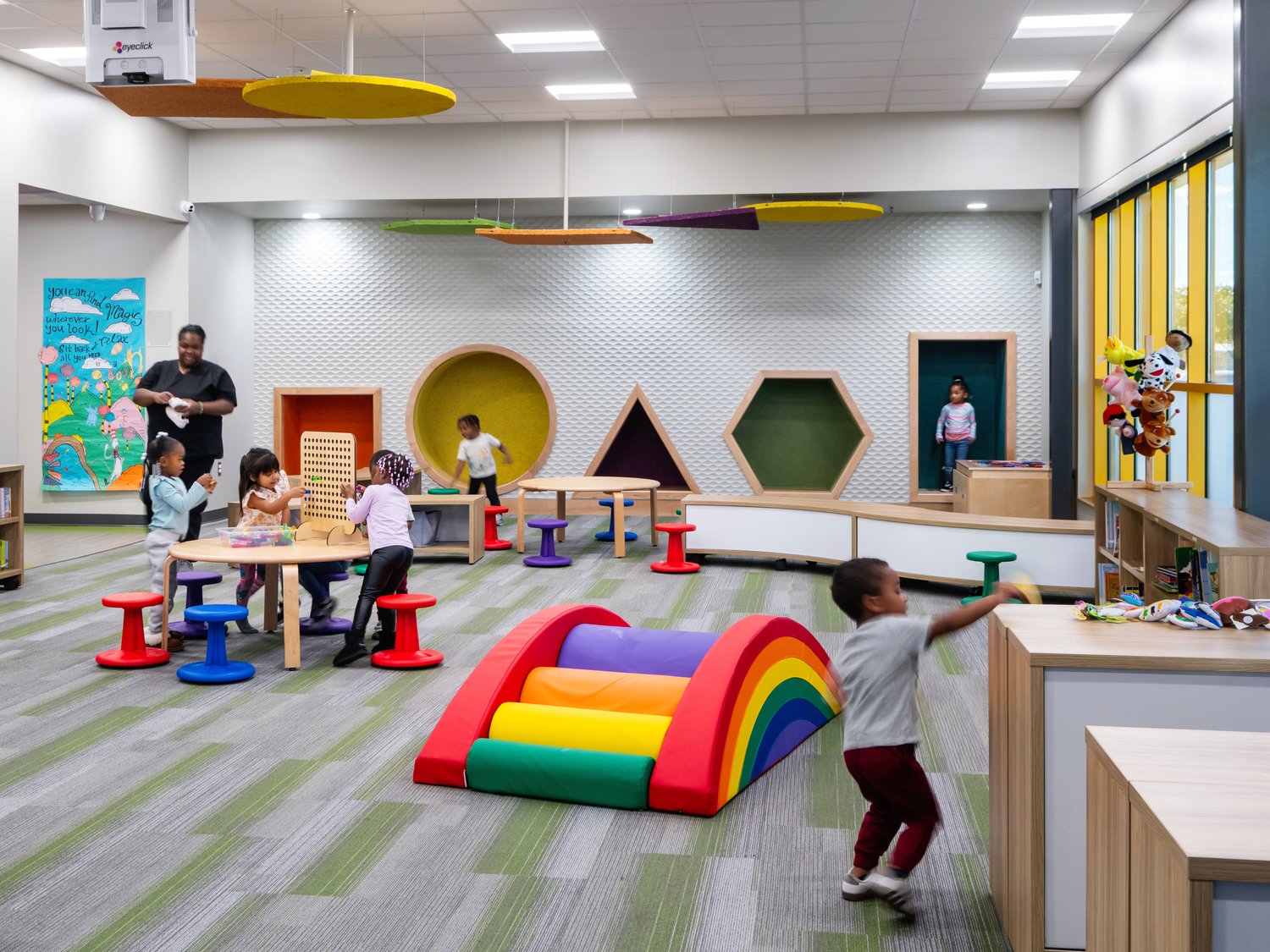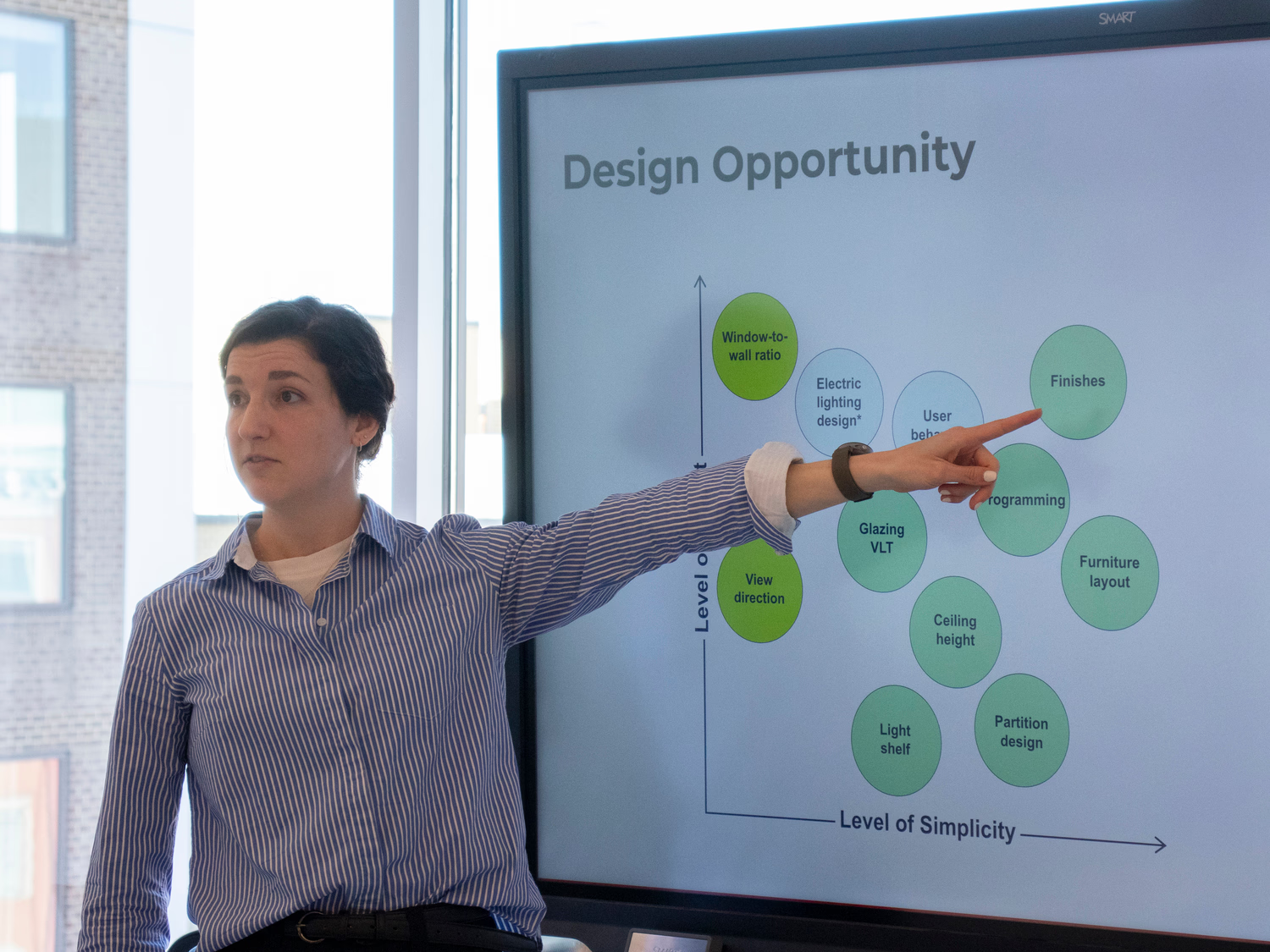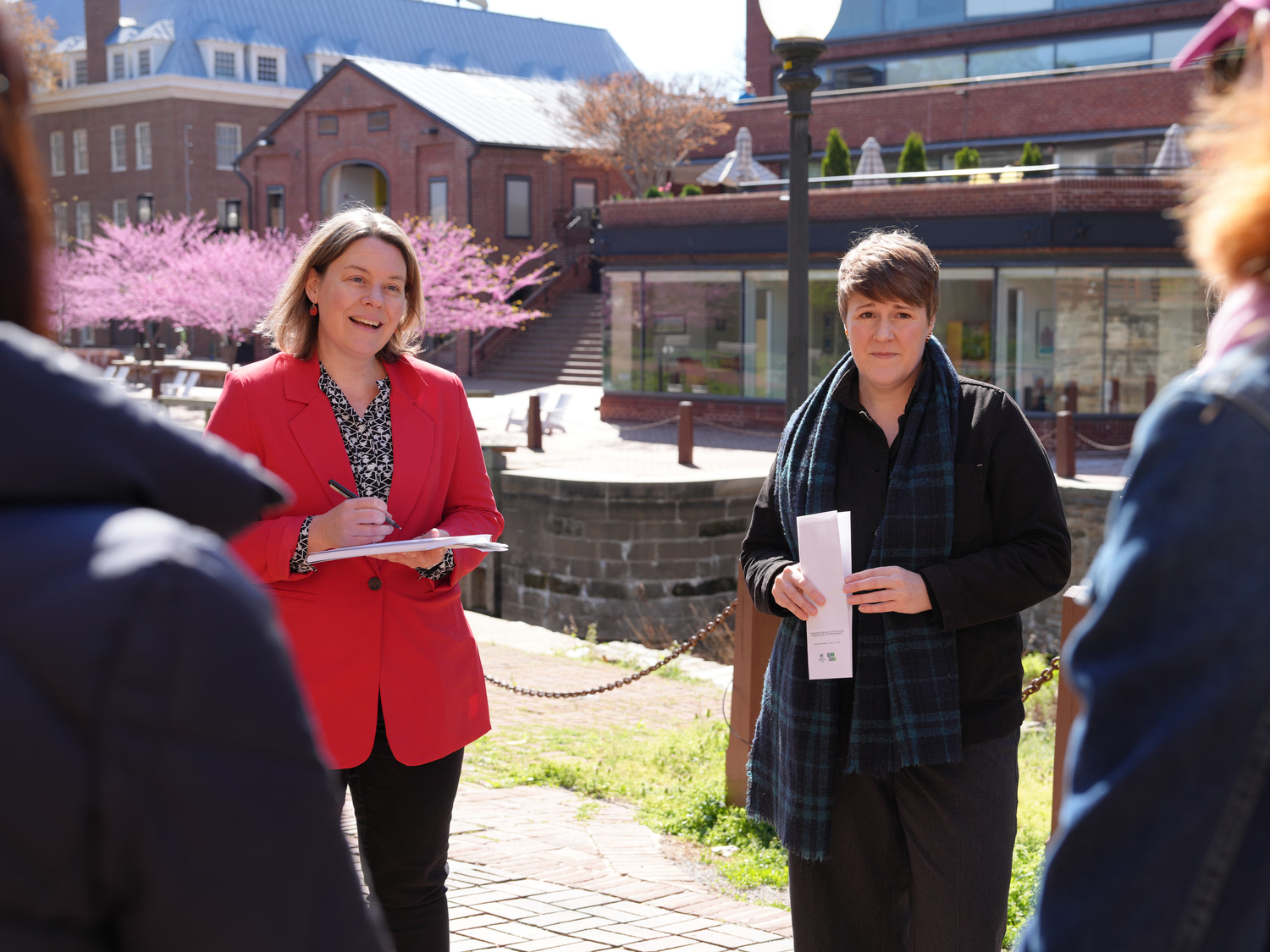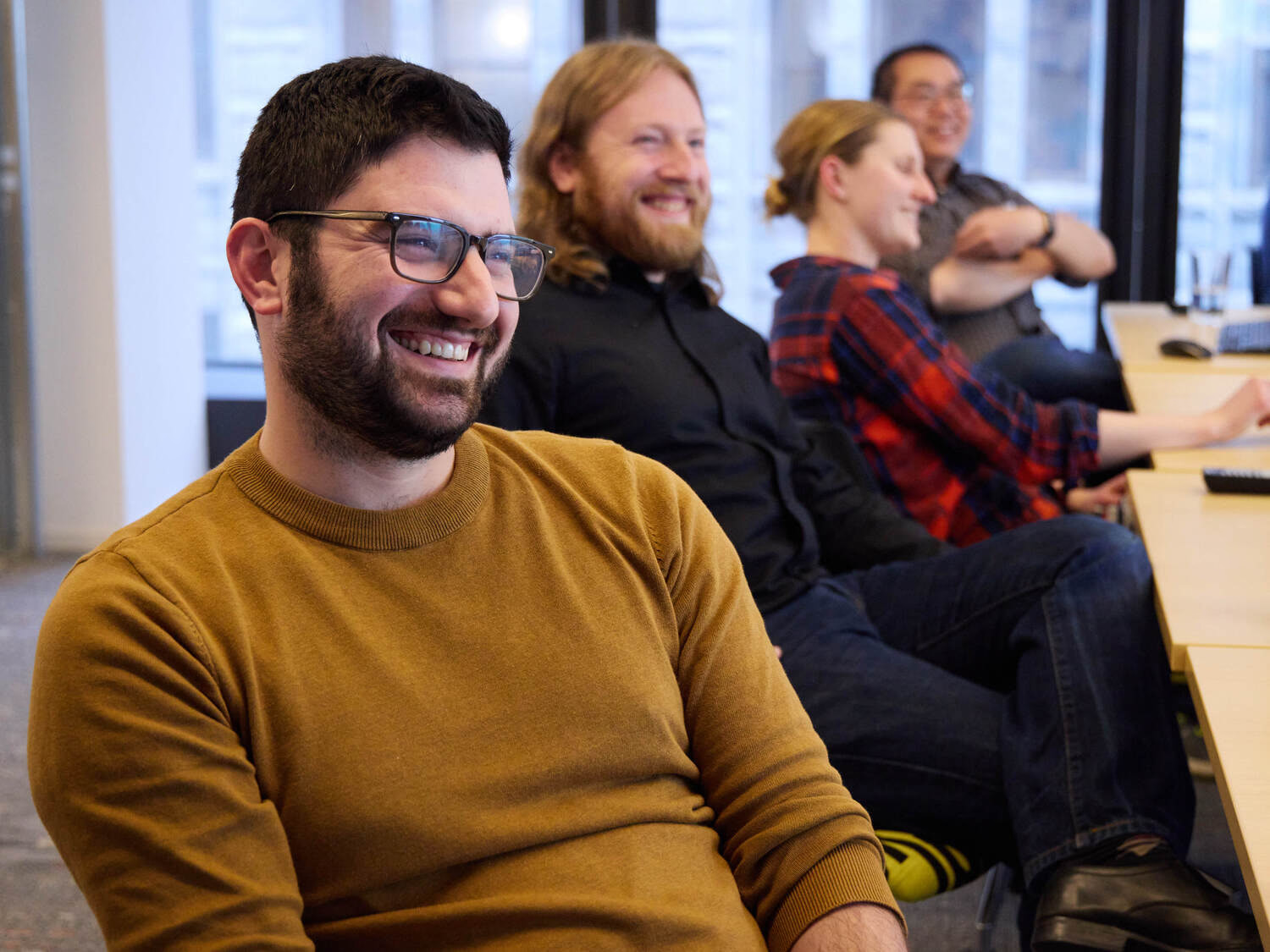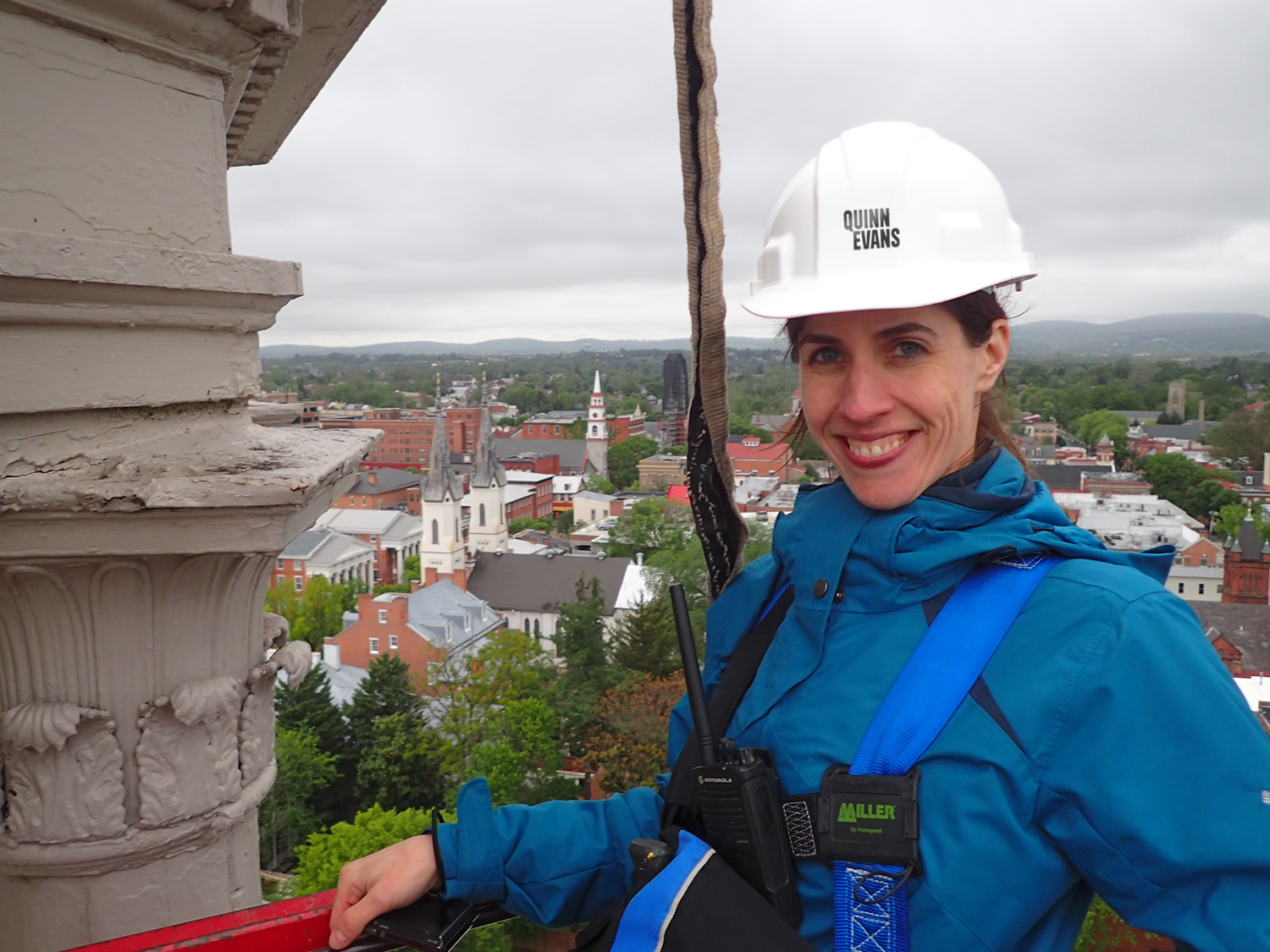We design arts spaces that bring people together and catalyze neighborhood investment.
The Fred Lazarus IV Center, set along North Avenue in Baltimore’s Station North neighborhood, is a hub of activity for students of the Maryland Institute College of Art (MICA). Transformed from an early-20th century millwork factory, today the building houses galleries, a lecture hall, a media lab, and a public café – engaging spaces that support collaboration and creativity.
The five-story building, which received multiple awards for design and adaptive use, represents much more than a home for arts education. Once a vacant eyesore in a community long troubled by disinvestment, the Lazarus Center has served as an anchor catalyst within what is now the vibrant Station North Arts District. The building is a clear reflection of MICA’s vision to create “a just, sustainable, and joyful world activated and enriched by artists, designers, and educators who are valued for their leadership and imagination.”
We designed the building’s renovation with the community in mind—bringing light and transparency deep into the building to animate the streetfront and engage passers-by. Expansive windows along the street frame an accessible, welcoming entrance and provide views into the galleries and café space. Bold, supergraphic signage signals MICA’s reach into the community as a center for the arts and announces the building as a gateway to the Station North neighborhood. A landscaped plaza with café seating and informal gathering space welcomes students and community members.
MICA is the nation’s oldest continuous degree-granting art college, established in 1826. Understanding its role in celebrating the arts, shaping culture, and championing equity, the institution has long recognized its impact in strengthening and uplifting surrounding communities. Today, the Fred Lazarus IV Center serves as a dynamic example in support of MICA’s mission: “EMPOWER students to forge creative, purposeful lives and careers in a diverse and changing world. THRIVE with Baltimore. MAKE the world we imagine.”


Anchored by the Arts
MICA’s Lazarus Center is among many examples of arts-based projects leading the way in urban revitalization across the country. Many cities have recognized the impact that cultural spaces can bring to underserved or disinvested communities – empowering neighborhoods by attracting investment and boosting local economies.

What’s more, arts activities are often easily accommodated within adaptive reuse projects, which transform outmoded buildings for new uses. Defunct factories and warehouses can be repurposed as galleries, makerspaces, and creative hubs. Historic commercial buildings can become theaters and performance halls. Schools can be converted into studios and artist lofts.

By reusing vacant structures, cultural institutions benefit by accessing inexpensive land and buildings, while communities benefit from an influx of artists, students, educators, and patrons. The results can recharge economies, revive commercial corridors, enhance neighborhood safety, and bring people of all ages and backgrounds together.

The preservation of aging and abandoned buildings also helps communities reclaim their local heritage, enabling them to celebrate the memories of once-bustling industrial hubs, commercial centers, or waterfront districts. Breathing new life into these properties connects residents with the past and inspires a shared hope in the future.

A Formula for Success
There are several compelling reasons that the arts can successfully lead the way in stimulating community revitalization. To begin, arts-focused environments appeal to diverse communities, transcending economic and demographic strata. New buildings or redevelopment projects that support the fine or performing arts are often welcomed with open arms by area residents.

Buildings that support the arts offer many advantages to communities, including access to programs that enlighten, educate, and entertain. Arts-based initiatives can help ignite social change, create jobs, and launch and support businesses, including the work of artists, artisans, and performers. According to Will Holman, executive director of Baltimore’s Open Works, “The real value of a makerspace isn’t the tools or the technology of the space, it’s the community and the connections that blossom there.”

These projects can help to beautify neighborhoods, transforming blighted or underutilized properties into welcoming, community-focused facilities. They can also help to save landmark buildings, despite neglect and disrepair, that represent important local history—buildings that tell meaningful stories of the past.

Notably, underutilized properties—even those that might initially seem unsuitable for adaptive use or sustainable renovation—can serve as inspiration for architectural creativity that is aligned with the imaginative work of artists and performers. While the design canvas that an aging factory building or warehouse presents may seem challenging, the results can often be exciting, provocative, and unexpected.

Designing for the Arts…and the Community
A thoughtful approach to design and a willingness to embrace the unique challenges of unconventional building environments are essential to bringing buildings back to life for the arts. A feasibility study is a crucial first step to determine the suitability of adapting a particular building for the desired use. This helps avoid the purchase of a “white elephant”—a building that presents too many complications to cost-effectively meet program needs.
Many arts projects require expertise in historic preservation and adaptive use, as well as knowledge of design requirements for specialized spaces. For example, galleries and performance venues typically require large-span spaces, which may necessitate the removal of columns and other impediments.

Entryways should be clear and inviting. Lighting along the façade can serve to both animate the building in the evening and help with security. Murals, banners, sculpture, digital projections, and other public art can liven the exterior as well. Plazas and open-air seating serve as a public amenity; parking lots and green spaces may host festivals, performances, or art fairs.

If the project involves historic tax credits, careful decisions will need to be made to meet preservation requirements while accommodating program needs. Accessibility and sustainability, including building systems, will also need to be addressed.

At the street level, large expanses of glass can bring light into dim interiors, while also enabling passers-by to view the artistic activity within. Both along the exterior and within the building, large-scale art and digital media displays can engage visitors and serve as social media backdrops. Creative placemaking not only requires skill in the design of functional, inspiring spaces, but benefits from an awareness of how arts organizations are promoted and marketed.

Investing in the Arts
Many cities – including our home cities of Ann Arbor, Baltimore, Detroit, Richmond, and Washington, DC – have seen a strong return on investment by designating arts districts, which utilize tax credits, regulatory flexibility, and other incentives to bring awareness and support to the arts. Metropolitan arts councils can help by providing guidance and grants to arts organizations. Cities benefit by catalyzing redevelopment and revitalization, reducing vacant or underutilized buildings and sites, enhancing property values, bringing in new jobs, and developing safer communities.
Whether a single building or an entire arts district, creating new homes for the arts helps bring people together and engender civic pride and investment. Partnerships are essential. Here, architects and artists can work closely together to enliven and revitalize communities and inspire new generations of creative minds.


